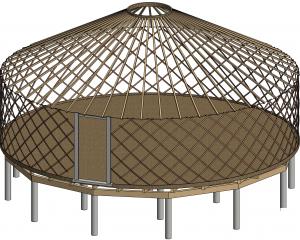The Department of Conservation had thought the rare yellowhead had been wiped out by the last beech mast in 2000 but it was recently sighted in the forest.
Beech masts create massive amounts of food for rats, stoats and mice, creating a population explosion which in turn preys on birds once the seeds run out.
A major beech mast season had been predicted throughout the country this year and the Government had launched the ''Battle for our Birds'' in response.
Doc Catlins services ranger Cheryl Pullar said staff were surprised to find the birds but were now concerned those that had returned to the forest could be lost due to this year's heavy silver beech mast in the forest.
Tracking tunnels measuring the density of rats showed there was a rise in the population of pests in the forest.
Doc scientist Graeme Elliott said if pest control was not carried out in Waikaia Forest, mohua would completely disappear from the area forever.
''This may be the last opportunity to protect them and recover this population,'' Mr Elliott said.
Mohua were once common in Southland but now lived only in fragmented populations, including in the Catlins.
''They've already gone from patches of bush around Southland and this year's beech mast will finish them off in Waikaia if we don't control the rats, mice and stoats.''
A pest-control operation would give the mohua a chance to recover to similar levels of those in the Catlins.
Other endangered species in the Waikaia Forest, such as long-tailed bats, robins, yellow-crowned parakeet, Hector's tree daisy, large land snails and peripatus (velvet worms) would also benefit from the operation.
Environment Southland had granted Doc consent for the 1080 drop and it was expected to go ahead in August or September.
Ms Pullar said the aerial drop would cover just under 7000ha of the forest, as part of the national Battle for our Birds operation.
Doc had been consulting with the local community on the operation and would be very careful to ensure aerial sowing of 1080 was accurate, she said.
''Boundaries of the areas will be marked with GPS technology and buffer zones from the boundaries, around waterways and other non-target areas have also been plotted.
"Signage warning of the operation will be put up at entries to the forest, and tracks within the operation areas will be cleared by Doc staff at the time of the operation.''
The pellets would contain deer repellent to control by-kill.











